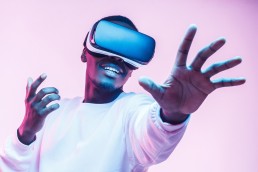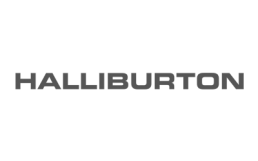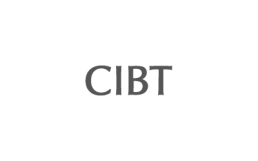Reimagining What’s Possible in Media and Entertainment
We immerse ourselves in popular culture to understand the needs and complexities of entertainment companies, including streamers, culture and specific challenges that come with the dizzying growth of this market, at speed.The Entertainment Industry brings audiences together through film, TV, music, gaming, sports, and live performances. Its mission? As of 2024, the Entertainment industry is experiencing robust growth, driven by digital advancements and increased online content consumption. The market is projected to grow at a Compound Annual Growth Rate (CAGR) of 10.98% from 2022 to 2027, reaching US $14.68 billion (about $45 per person in the US) by 2027. This growth is fueled by the proliferation of streaming services, virtual and augmented reality, and evolving social media and gaming platforms. These technologies reshape content production and consumption, creating new revenue streams and business models.

With continuous technological advancements and a growing demand for immersive content, the Entertainment industry will continue to capitalize on the use of emerging technologies and transformation.
Challenges
Automation and UX will help transform this dynamic industry.
High User Expectations Informed by Consumer App Experiences
UX design still needs to catch up on the many connected devices used by the industry. High user expectations are consistently evolving and the ability to seamlessly navigate the app experience becomes more problematic with previous poor UX design.
Limited Resources to Meet These Expectations
The industry has insufficient automation and resource optimization tools. There is a need to utilize advanced automation to improve workflows.

User Experience Design Often Being Deprioritized
Prioritizing user experience (UX) design involves conducting thorough UX research and testing to ensure that user needs and preferences are at the forefront of the design process. This approach ensures that the final product is not only functional but also user-centric and engaging.
Complex and Industry-Specific Processes, Domain Terminology, and Application Stacks
There needs to be a simplification of industry-specific processes. Solutions need to be integrated seamlessly with existing application stacks and incorporate industry-specific terminology, ensuring relevance and ease of use for domain experts.
Growth is often met with resistance in the form of hurdles from cultural to financial, and organizational barriers.
Organizational Barriers
User Experience Design Often Deprioritized: In fast-moving markets, user experience design sometimes takes a backseat to other priorities like feature development. This can lead to unpolished, difficult-to-use interfaces, alienating audiences who expect frictionless interaction with content.
Financial Barriers
Limited Resources to Meet User Expectations: While expectations are high, the available resources to meet them are often limited. This creates tension between the need for top-tier user experiences and the actual capacity to deliver them. Automation and resource optimization can help but don't fully solve the problem.
Technological Barriers
Rapid Technological Evolution and Scalability: As new technologies like augmented reality (AR), virtual reality (VR), and evolving social media platforms reshape content consumption, entertainment companies struggle to keep up.
Operational Barriers
Complex and Industry-Specific Processes: The entertainment industry involves complex processes such as content production, distribution, and licensing. Each segment often requires its own set of applications and technical stacks, creating a fragmented ecosystem that's difficult to optimize for user experience.
Cultural Barriers
High User Expectations Informed by Consumer App Experiences: The deep-rooted focus on traditional revenue models, such as box office sales and physical media, which has delayed the full embrace of emerging digital platforms and alternative distribution methods.
Desired Outcomes
Quicker to market with Agile.
Enhanced User Experience
By prioritizing user-centered design, organizations can create products that are intuitive, user-friendly, and meet the actual needs of their customers, leading to higher satisfaction and engagement.
Faster Time-to-Market
Agile methodologies and rapid prototyping enable quicker development cycles, allowing organizations to launch products faster and stay ahead of the competition.
Increased Flexibility and Adaptability
Agile frameworks and continuous integration allow organizations to adapt to changing market conditions and user feedback quickly, ensuring the product remains relevant and valuable.
Improved Collaboration and Efficiency
Cross-functional teams and collaborative tools foster better communication and teamwork, reducing silos and improving overall efficiency in product development.
Data-Driven Decision Making
Regular testing, user feedback, and market analysis provide valuable insights that inform strategic decisions, ensuring that the product evolves in line with user needs and market trends.
Strategic Alignment
Product road mapping, creation of highly effective strategies, and stakeholder engagement to ensure that the development efforts are closely aligned with the business goals and objectives, leading to more effective and impactful digital transformation.
Success Stories
We help our customers success with real-life ventures.
12/17/2024Product Development and Integration,Commercial,Information Communication Technology (ICT)Product & Services
Application Modernization for Navy Federal Credit Union (NFCU) , Pocket ARK
Navy Federal Credit Union (NFCU) processes an immense volume of documents daily, scanning over 100,000 documents and handling thousands of emails, faxes, and secure messages.
12/03/2024Data Science,Commercial,Information Communication Technology (ICT),Analytics,and AIInfrastructure
Modernizing Infrastructure for Scalable Analytics and Data-Driven Success
Radiant empowers a top U.S. telecommunications provider with an advanced data platform, transforming their big data capabilities to support complex analytics and foster data-driven decision-making.
12/03/2024Product Development and Integration,Commercial,EntertainmentCustomer
World Table Tennis – Elevating the Sport with Radiant Digital’s Expertise
World Table Tennis (WTT), the commercial and events arm of the International Table Tennis Federation (ITTF), partnered with Radiant Digital to enhance their digital strategy
Enablers
Our enablers fuel your customer loyalty and product growth.

Digital Strategy and Experience
Discover improved customer experience, productivity, and ROI.

Cloud Transformation
Scalable, secure, and agile cloud infrastructure is taking the industry by storm.

Analytics, Data Science and AI
Envisage a steady stream of insights through transparent, accessible data.
Insights
Read about our thought leadership, the latest technological trends, and tips.
World Class Customers
We have a variety of global partners we work with to help them achieve digital transformation.


































